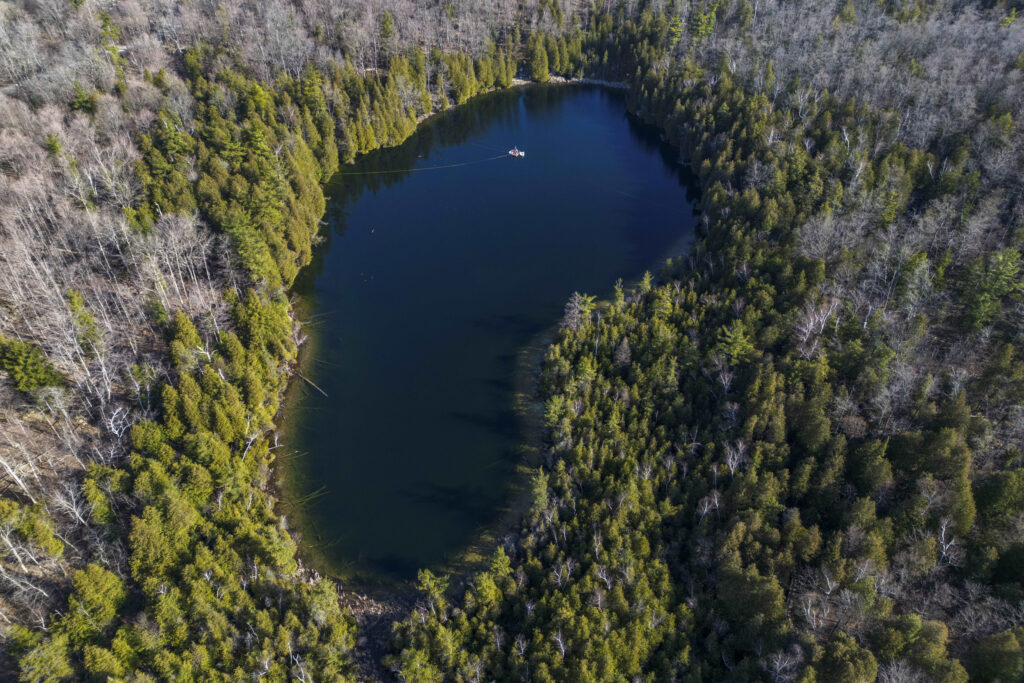To call global warming alarmism a cult seems to us to be unhelpful. We prefer to exchange ideas rather than insults and attack arguments not motives. But it’s not unfair to observe that warmism can succumb to circular, even dogmatic reasoning that treats the thing to be proved at the end of the investigation as a premise to be assumed at the beginning. For instance a new piece on Arctic warming that says “The last time that atmospheric CO2 concentrations reached today’s level – about 412 parts per million – was 3 million years ago, during the Pliocene Epoch. That means the Arctic hasn’t been this warm in 3 million years.” You see the loop drawing tight on itself here? The hypothesis that CO2 causes warming is not investigated by measuring whether the Arctic is warmer than it’s been for 3 million years. Instead high levels of CO2 are taken as proof that it must be, which in turn is taken as proof that CO2 causes warming. The argument would be bad enough just on grounds of faulty logic. What is even worse is that we know the Arctic has been warmer in the past 3,000 years, let alone the past 3 million years.
This particular piece ran in The Conversation which really does read rather more like The Catechism on climate. But as David Middleton points out, while the article is not unreasonable as a look at atmospheric CO2 it spectacularly begs the question what the actual temperature is compared to what it was in the past. In addition to the evidence about warmer conditions since the end of the last ice age, as Middleton again points out, we also know the Arctic was considerably warmer 120,000 years ago during the previous Eemian interglacial “with CO2 levels probably only around 300 ppm.”
It’s a problem for those interested in evidence-based decision-making and the normal cause-effect mechanism that underlies science. Another problem is why, if CO2 causes warming, the last time it reached today’s level what followed was not warming at all but the first Ice Age the planet had seen since before the dinosaurs. It’s kind of important to the story.
It’s also not the only piece of oddly circular reasoning to come to our attention this week with respect to Arctic ice. A news release from the University of Alaska Fairbanks on EurekAlert! announces that that Arctic ice is melting and catastrophe looms and blames it on “increased heat from Arctic rivers”. Which the release claims “contribute significantly more heat to the Arctic Ocean than they did in 1980” and that especially “during spring breakup” this warmer water “dumps into the ice-covered Arctic Ocean and spreads below the ice, decaying it. Once the sea ice melts, the warm water begins heating the atmosphere.” But hang on. What’s heating the rivers?
If it’s underground lava or some such, it’s got nothing to do with man-made warming. But if it’s man-made warming, we’re not putting a blowtorch directly to these rivers. Rather, we’re warming the atmosphere, which warms the rivers, which… warm the atmosphere? Have we invented a perpetual motion machine?
Apparently so. “Igor Polyakov, co-author and oceanographer at the University of Alaska Fairbanks' International Arctic Research Center and Finnish Meteorological Institute…. expects that rising global air temperatures will continue to warm Arctic rivers in the future. As rivers heat up, more heat will flow into the Arctic Ocean, melting more sea ice and accelerating Arctic warming.”
It would, we suppose, be nitpicking to observe that the actual Arctic ice left late last year and is returning early this year at least in Hudson Bay. But not to object that you can’t have a cycle of air warming water that warms the air that warms the water. You don’t get something for nothing; it violates the 2nd Law of Thermodynamics. And then to warn against logical systems that contract too severely in upon themselves, making conclusion into premise and back again in a way that raises the rhetorical temperature inexorably.
Just as NASA’s Jet Propulsion Laboratory sexed up a study of melting ice by noting that between them the Arctic and Antarctic “contain enough ice, that if it were to melt all at once, would raise sea levels by nearly 215 feet” without mentioning, as E. Calvin Beisner promptly did, that even at the most alarming of alarmist rates it would actually take them 21,829 years to melt.
When people start to talk that way, something is interfering with their judgement.



The second law of thermodynamics states that isolated systems spontaneously evolve towards thermodynamic equilibrium. That is, thermal energy moves from hot to cold - which is why ocean currents go from the equator to the poles. The theory under discussion above is that a warmer atmosphere at lower latitudes will melt winter ice and snow, forming rivers, some of which flow into the Arctic Ocean. This natural flow of warmth to cold tends toward equilibrium, which is to say that the energy that originates in the atmosphere in lower latitudes ends up heating up the atmosphere at higher latitudes, using rivers (rather than ocean currents) as a mode of transport. There is nothing inherently ridiculous or "circular" about this.
Is there any data showing an increase in river temperatures in Alaska or are we simply to believe that is so? On another topic - it seems to me that melting Ice over the arctic ocean will hardly change the ocean level as arctic ice is floating. That means it has already displaced its weight of water. There will be a small increase because that ice is floating on salt water but that increase would be small. Of course Antarctic ice is over land so it’s melting will cause a rise in sea level.
Any geothermal ground source heat pump, heating system designer and/or installer knows, that the underground temperature gradient, below which the temperatures never change but above which the temperatures change with the seasons, just as they do above ground, can be calculated as the mean, annual, surface temperature. Which is the same as the temperature of the climate. Since we know that the air is heated by the ground, the source of climate becomes self-evident and we know for a fact that AGW is a lie, a con and swindle.
Any ground source heat pump, heating system designer and/or installer knows, that the underground temperature gradient, below which the temperatures never change but above which the temperatures change with the seasons, just as they do above ground, can be calculated as the annual mean, surface temperature, which is also the temperature of the climate. Since we know that it is the ground that heats the air, the source of climate becomes self-evident and unmistakable and we know that AGW is a lie, a con and a swindle!
Many thanks for the collection of information on the climate issue. I always thoroughly enjoy my Wednesday read.